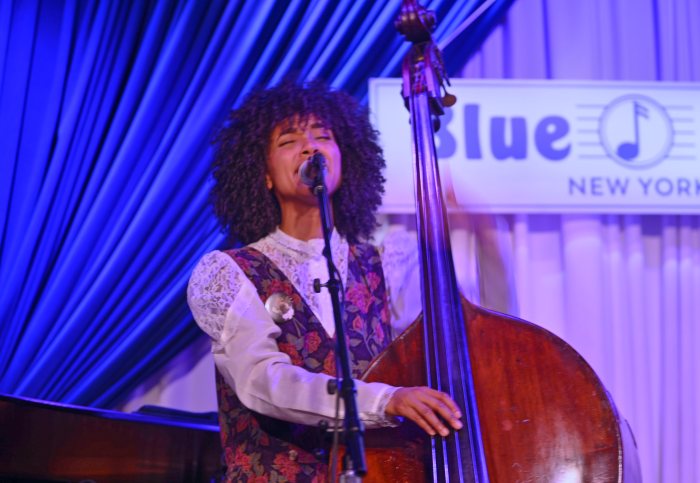
Where would Russian super spies like the Jenningses in “The Americans” be without their 1980s accoutrements?
Beyond the high-waisted Jordache jeans and hairstyles, the TV show is populated with bygone electronics — phones and TVs and radios authentic to the Reagan era — and one source for the old-school wares is a prop library tucked inside a Gowanus warehouse.
The Lower East Side Ecology Center, a nonprofit focused on recycling, reuse and waste reduction, opened the Gowanus E-Waste Warehouse at 469 President St. in 2012.
A year later, the prop library was established “after we realized how many, like, really awesome vintage pieces we get in and it’s really a shame to just recycle these things,” Erin Cass, the program coordinator, told amNewYork during a recent visit to the warehouse.

The warehouse is the only permanent free drop-off location in the city that is open to the public, according to Cass. A state law prohibits New Yorkers from throwing away old electronics — what is termed e-waste — with the regular trash.
The prop library rents out pieces to television productions, local artists and indie films. In addition to the “The Americans,” Cass said props have been used for several other shows such as “Orange Is the New Black” and “The Blacklist.”
Since the beginning of “The Blacklist,” a show centered on FBI profiler Elizabeth Keen that premiered in fall 2013, the show’s decorators — Shelley Barclay, Kate Foster and Sean Haines — have rented from the prop library, the trio said in a phone interview.
“We’ve used them quite a bit,” Barclay said.
For an episode this season, they needed to fill an appliance repair shop, which Barclay called a “very old-fashioned hole-in-the-wall,” and they got palettes of items from the warehouse.

Last season, for an episode in which the FBI was hacked and the show’s protagonists were sequestered and quarantined from their electronics, Foster said they turned to the prop library for old audio and video equipment.
Here is how it works: a prop master or artist will email Cass about what they are looking for — the more specific the better, she said. For instance, she said it is helpful if someone says they are looking for a 12-inch, wood-paneled, cathode ray tube TV from 1975, and if it needs to function or not. Several of the electronics in the library work, Cass noted.
After the customer gets a quote, the props are rented out monthly, with some of them rented out for as low as $5. A deposit equal to the rental fee is also required, she said.
“One of the really awesome things about this place and about our props collection is the rental fees are really low,” Cass said.
Mary Attaway, a set decoration buyer who has been renting from the prop library since 2013, noted its affordability.
“On the very first job I ever did, I ran across it,” she said in a phone interview.
For her first job, an indie film, Attaway said she needed a large camera for a TV reporter, and the library had one, which she rented for about $20.
For other films, she has rented Blackberries, old iPhones and computers, saying that the library is “not a traditional prop house.”
Since the library is donation based, Attaway said, “It’s kind of fun because (the selection) changes.”
Props from the library are not only used to contribute to a show’s authenticity or aesthetic, but sometimes as the centerpiece of art.
Visual artist Jeanette May started working on “Tech Vanitas” — photographs, as her website puts it, “that embrace the anxiety surrounding technological obsolescence” — around three years ago.
May saw the library’s red TV set, which she called “space-agey,” and built one of her photos, “Tech Vanitas: Fiber Optics,” around it.
“I was drawn to that TV right away,” she said in a phone interview. “It was just super cool. It was the kind of thing you wished you had as a teenager.”
In the still life photograph, the radio, pager and landline phone with a transparent shell are also from the library.
“They often have exactly what I need — I’m looking for items that were thrown away, like a landline phone,” she said.
Cass started working at the prop library last summer, and said she wants to professionalize it, including creating an online digital prop catalog.
Requests have come in for ancient electrical panels, which they do not have, she said, and often for functioning top-loading VCRs. Yes, VCRs.
“Yeah, that’s like a hot item here for some reason,” she said. “It’s very strange. That, and, then, like, old retro gaming stuff people are really into.”
In addition to running the prop library, Cass also oversees the warehouse’s “ReUse Store,” which sells refurbished electronics.
“Everything that we sell in the store, unless otherwise marked, has been tested, any issues diagnosed, repaired, and then tested two more times by our technicians,” she explained.
The store sells a lot of computers and laptops, especially MacBook Pros, she said.
“Part of the goal of the organization is also to provide access to technology. A lot of new technology is so cost prohibitive that there are a lot of New Yorkers that can’t afford to buy a smartphone,” she said. “So this is a place you can come and buy like a $30 phone.”
The ecology center guarantees 100 percent data security when residents drop off things such as computers and hard drives, Cass said, something it takes very seriously.
“They’re … wiped through a seven-pass system that we have set up in our tech room so that’s the same system that’s used by the Department of Defense, it’s a very secure system,” she explained.
Cass said that what is at the cavernous warehouse is a fraction of the e-waste New York City alone produces.
“We process over a million pounds of waste a year,” she said.
Electronics are toxic and should not end up in the ground. One of the ecology center’s main goals is to educate the public on how to responsibly recycle and dispose of electronic waste as technology continues to rapidly change, Cass said.
She added, “It’s very important that as we produce new things, we also come up with ways to responsibly dispose of them.




































